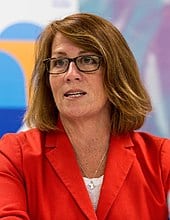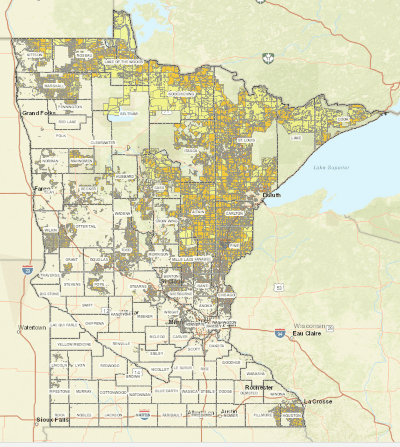
Murphy
Every Minnesota resident would receive access to high-speed internet service under a new proposal that would fund broadband expansion with sales tax revenue earned from out-of-state internet purchases.
The Connect MN plan, backed by the Democratic-Farmer-Labor Party (DFL) candidate for governor Erin Murphy, would offer rural and underserved Minnesotans 100/20 Mbps broadband service by 2026. To pay for the expansion program, Murphy proposes to invest $100 million annually in Minnesota’s Broadband Development Grant Program, which would provide funding to public and private providers to incentivize expansion into areas currently unprofitable to serve.
“For too long, we have talked about the importance of broadband at the Capitol without the investment needed to address the scope of the challenge,” said Murphy. “When I am Governor, we will move forward with a strategic plan that will connect every Minnesotan with the high-speed internet they need to succeed.”
Funding for the broadband expansion would come from new sales tax collections on out-of-state online purchases that have largely gone uncollected in the past. With the recent Supreme Court decision, South Dakota v. Wayfair, out-of-state retailers would be compelled to collect Minnesota’s sales tax when shipping items to a Minnesota address and remit the proceeds to the state government. The U.S. Government Accountability Office estimates more uniform collection of sales tax on out-of-state purchases will collect an extra $132-206 million for Minnesota annually. Dedicating much of that money to improve broadband service in the state could result in extending service to 550,000 unserved households — more than 26% of the state — within eight years.

Colored sections show areas lacking at least 25/3 Mbps broadband.
That level of investment would put Minnesota in the same league as New York, where in 2015 Gov. Andrew Cuomo announced a $500 million investment by the state in rural broadband expansion in an effort to achieve statewide broadband access by 2018. Cuomo’s plan is still under construction, and has been criticized for missing its end goal of universal coverage, with about 1-2% of state residents left with the option of satellite-delivered internet access.
Murphy’s plan would dramatically expand on her predecessor’s own broadband initiatives. Incumbent Gov. Mark Dayton’s (DFL) 2018 plan proposed to invest $30 million and reach 11,000 homes and businesses. Since taking office, Gov. Dayton claims to have secured enough funding to expand broadband access to 33,852 households, 5,189 businesses, and 300 community institutions in Greater Minnesota since taking office in 2011. Reaching the half million still unserved homes would take decades at current funding levels.
Murphy’s proposal also goes far beyond rural broadband expansion programs in other states. Tennessee currently offers a $45 million investment in rural broadband over three years — with less than $30 million specifically designated for rural broadband hookups. In West Virginia, a state ranked 43rd in wired broadband by the FCC’s 2018 Broadband Deployment Report, less than $2 million was available this year for rural broadband expansion, combining available funds from a Community Development Block Grant program with leftover money originally set aside for water and sewer projects.
Murphy claims universal access to broadband spurs innovation and drives economic development, education, healthcare and quality of life. One study indicates that a community will see a $10 return on investment for every $1 invested in broadband.
“This is a once-in-a-generation opportunity to make progress on an issue holding back too many Minnesotans in communities all over the state,” said Murphy. “It’s a critical step in ensuring that everyone in Minnesota can build a bright future for themselves and their families.”


 Subscribe
Subscribe
I would like to see an economic analysis of this kind of program. Frequently it seems governments come out with some round number for how much money they will spend; it ought to be possible to make an estimate of what it would cost ahead of time and have a believable program.
For instance NY had a big ticket expansion program that wired a few people who didn’t have cable
but didn’t make much of a dent in the unserved and underserved population.